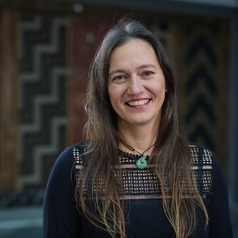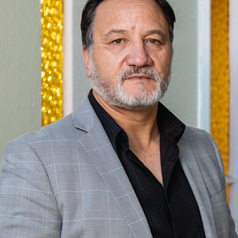When TVNZ cancelled reality TV show Police Ten 7 earlier this year, it certainly rattled some law-and-order cages.
The show’s former host Graham Bell, who described suspects variously as “creeps, halfwits, low-lifes, mongrels and lunatics”, claimed “wokeness killed Police Ten 7”. New Zealand First leader Winston Peters blamed “cancel culture”. One radio host said “the whingers have won”.
But Police Ten 7 – TVNZ’s longest-running reality series – was already controversial for its depiction of criminal behaviour as popular entertainment, and for an alleged over-representation of Māori and Pacific offenders or suspects.
In 2021, Auckland Councillor Efeso Collins was threatened after tweeting that the show should be scrapped because it “feeds on racial stereotypes”. TVNZ subsequently commissioned an independent review of the show and renamed it Ten 7 Aotearoa, but eventually decided to end its run.
The controversy inspired us to analyse Police Ten 7 more closely and measure its treatment of Māori, Pasifika and European suspects – as well as police officers. Our soon-to-be-published findings support claims the show was not evenhanded in its depiction of these groups.
Framing the ‘bad guys’
We focused on the calendar year previous to Collins’ criticism of Police Ten 7, and critically analysed 12 episodes that aired between September and December 2020. Among other data, we recorded the range of alleged offences and the airtime spent on each suspect.
Because people tend to recognise faces more readily when they belong to the same racial group (so-called “cross-race bias”), one of the two Māori members on the research team recorded the racial identity of suspects and officers.
He identified “brown people” based on information provided directly in the show (“our offender tonight is of Polynesian descent”) or by making a holistic assessment of people’s looks, names, culturally significant tattoos, accents and so on.
We then compared our data with 2020 police data on types of crime and ethnicity (including ethnicity of officers). Our findings confirm US research on reality TV police shows, which has found a tendency to portray non-white people as the “bad guys”.
While TVNZ’s independent review found Police Ten 7 was “reflective of the reality of patterns of crime and offending in Aotearoa”, our analysis found otherwise.
Suspect airtime
Of all actual New Zealand police suspects in 2020, 53% were Polynesian. However, Māori and Pasifika made up 71% of suspects featured in the episodes of Police Ten 7 we sampled.
In comparison, Europeans made up 36% of actual police proceedings, and 29% of suspects on the show. (The remaining 11% in police statistics covers other ethnicities.)
We also looked at the airtime Police Ten 7 gave different suspects, compared to how often police dealt with them according to the data. Of the total airtime spent on suspects, 62% was spent on Māori or Pasifika, compared to 53% of total police proceedings in 2020.
In comparison, the portion of airtime spent on European suspects (38%) more closely reflected how often police proceeded against Europeans in 2020 (36%).
Types of crime
Police Ten 7 also portrayed Māori and Pasifika as more violent than police statistics show. Over the 12 episodes sampled, 100% of those suspected of violent crime (homicide, sexual assault, endangering persons, property damage) were Polynesian. This compares to 40% in police statistics.
By contrast, police statistics show Māori and Pasifika made up 43% of traffic offence suspects, compared to only 6% on Police Ten 7.
Police data show Europeans made up 34% of suspects for violent crime. Yet Police Ten 7 tended to disproportionately portray Europeans as lower-level offenders or suspects.
According to police statistics, Europeans made up 26% of traffic offence suspects compared to 41% on the show. Europeans constituted 35% of public order offenders, compared to 67% on Police Ten 7.
We argue that over-representing Europeans in less serious offence categories suggests to TV audiences that any harm Europeans cause is somewhat unintended or easily explained.
Finally, we found the same disparities applied to the police officers featured in the sampled episodes. While Māori and Pasifika officers constitute nearly 20% of the NZ police force, they made up only 6% of the officers on Police Ten 7.
Others and ourselves
Most people have little first-hand experience of crime and rely on media for information. Consequently, news and entertainment programmes help shape views of the criminal justice system and those involved in it.
Based on our sampled episodes, a case can be made that Police Ten 7 did reinforce racial stereotypes of Māori and Pasifika as more criminal and violent. We argue this stereotyping was exacerbated by the under-representation of violent European suspects.
We also suggest the under-represention of Māori and Pasifika police officers would not have helped police recruitment efforts, given the police themselves later acknowledged the need to remove barriers to wahine Māori in particular.
After all, the media shape not only how we see others, but also how we see ourselves. Any future New Zealand reality TV crime or police show would need to be mindful of these pitfalls and effects.
The authors acknowledge the assistance of postgraduate student Wairua Busby-Pukeiti in gathering the data for this article.




 Asian Fund Managers Turn More Optimistic on Growth but Curb Equity Return Expectations: BofA Survey
Asian Fund Managers Turn More Optimistic on Growth but Curb Equity Return Expectations: BofA Survey  Evercore Reaffirms Alphabet’s Search Dominance as AI Competition Intensifies
Evercore Reaffirms Alphabet’s Search Dominance as AI Competition Intensifies  Robinhood Expands Sports Event Contracts With Player Performance Wagers
Robinhood Expands Sports Event Contracts With Player Performance Wagers 


























